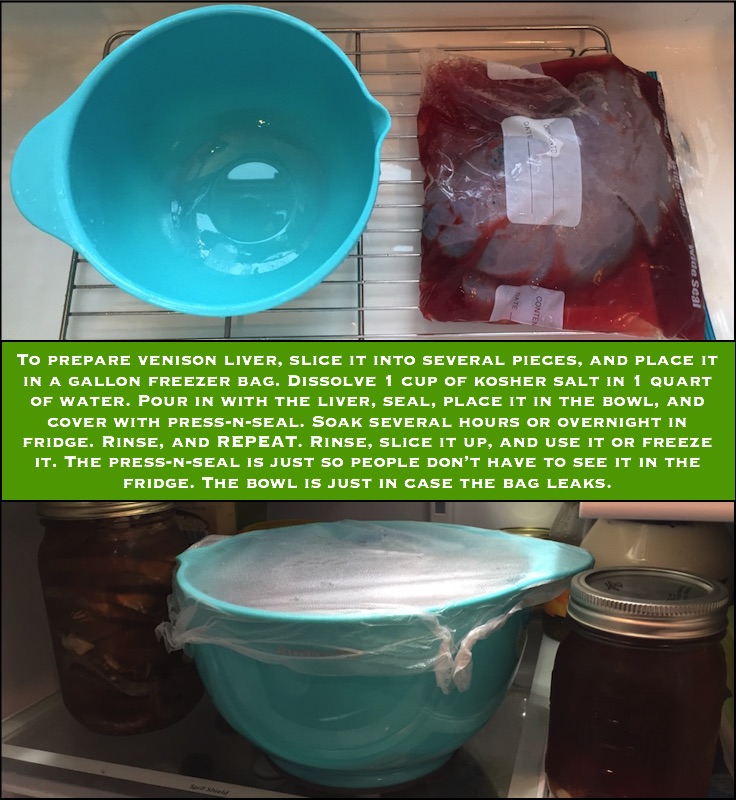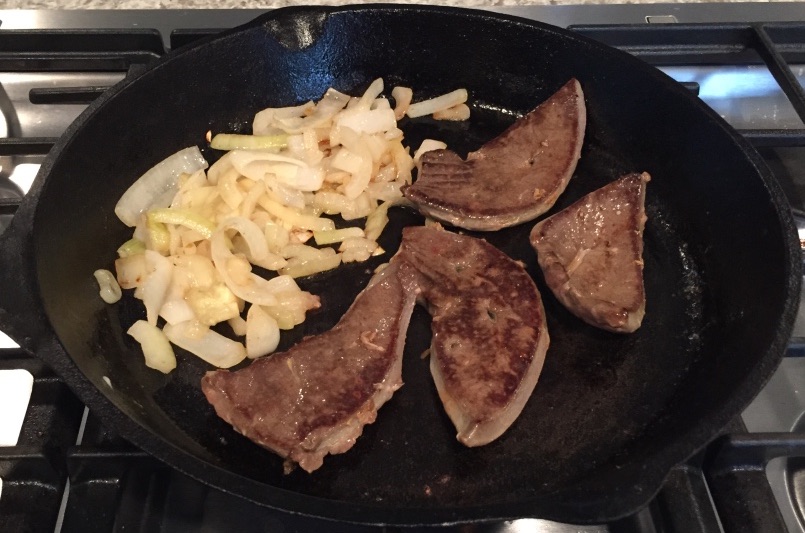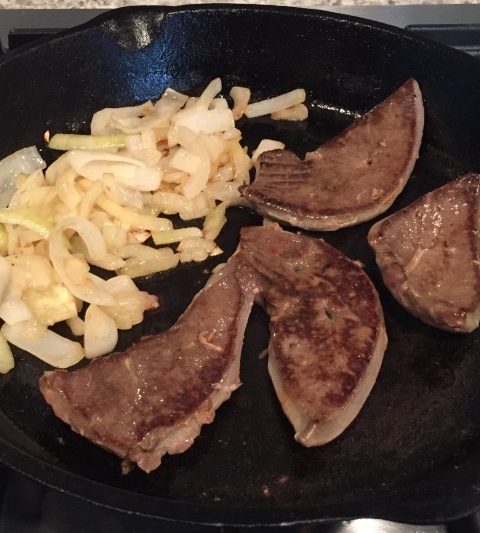
Venison liver is often one for the first meals prepped from the animal after a successful hunt. Personally, I’d go with the tenderloin first. Nothing wrong with starting with the liver, but I prefer to do a little prep on it before I use it, which will take a day or two.
The liver is a filter for the blood. As such, it will have a lot of blood in it – and the more blood you can remove, the better it will taste.
Fresh liver – from ANY animal – will have a bit of a metallic taste to it. This is BECAUSE of the blood. To cut back on that taste, it’s a simple matter of soaking. Now, you’ll never get all of the blood out – and if you could, it wouldn’t taste much like liver anymore.
To start, cut the liver into several parts (2-3 chunks). The main reason for this is to expose more surface area to the brine solution. If you don’t cut it, you’ll find that the “skin” on the liver greatly impedes the soaking process.
In a mixing bowl, dissolve several tablespoons to a half cup of kosher or pickling salt in a quart of water. You don’t have to be precise. I usually dump a bunch of salt in the bowl, and cover with enough water that I think will dissolve the salt, then stir till it’s dissolved. If it needs more water, I add a little more.
Put the liver and salt water into a gallon freezer bag or silicone bag. Seal it. Put it in the mixing bowl, and place it in the fridge. You want to put the bag in a bowl for two reasons:
1) Any type of bag might leak when you least want them too.
2) You can cover the bowl with a paper towel, or press-n-seal, or maybe it even has a cover. Not everyone likes to see a liver soaking in the fridge!
If you have something that you brine in, like this brining bucket, you can use that as well – and it helps keep the liver fully submerged.
Soak it for a few hours then rinse it. If it’s still very bloody, mix a new batch of salt water, and repeat. Twice is usually good. Remember, you’ll never get all the blood out.
Can you freeze deer liver?
After a final rinse, slice it into strips about 3/8 inch or so. You are ready to fry them up, or place the strips on wax paper or silicone baking mats on a baking sheet, and freeze them. The silicone mats make them super easy to remove from the tray. Once they are frozen, I’ll take the solid strips and vacuum seal them in serving size portions (3-4 slices for and individual serving) – which are perfect for a lunch of liver and onions (see recipe here!) at a moments notice. If you vacuum seal them, I’ve had them last for over a year and they still taste just as great! Though I usually eat them much sooner – but sometimes things can get lost in the freezer!
As a final note on the liver: Carefully inspect it when you are field dressing the deer. If ANYTHING looks off about it, leave it with the gut pile. I ended up discarding the liver here because of black spots, which turned out to be liver flukes. These spots were speckled throughout when I sliced it. Don’t let this dissuade you from keeping the liver – I’ve only seen this twice out of about 30 deer – but always take a good look at it. If in doubt, leave it behind.

Shopping List:
- Mixing Bowl Set
- Gallon Ziploc Bag
- Gallon Silicone Bags
- Kosher or Pickling Salt
- Silicone Baking Mat
- Vacuum Sealer
- Brining Bucket


